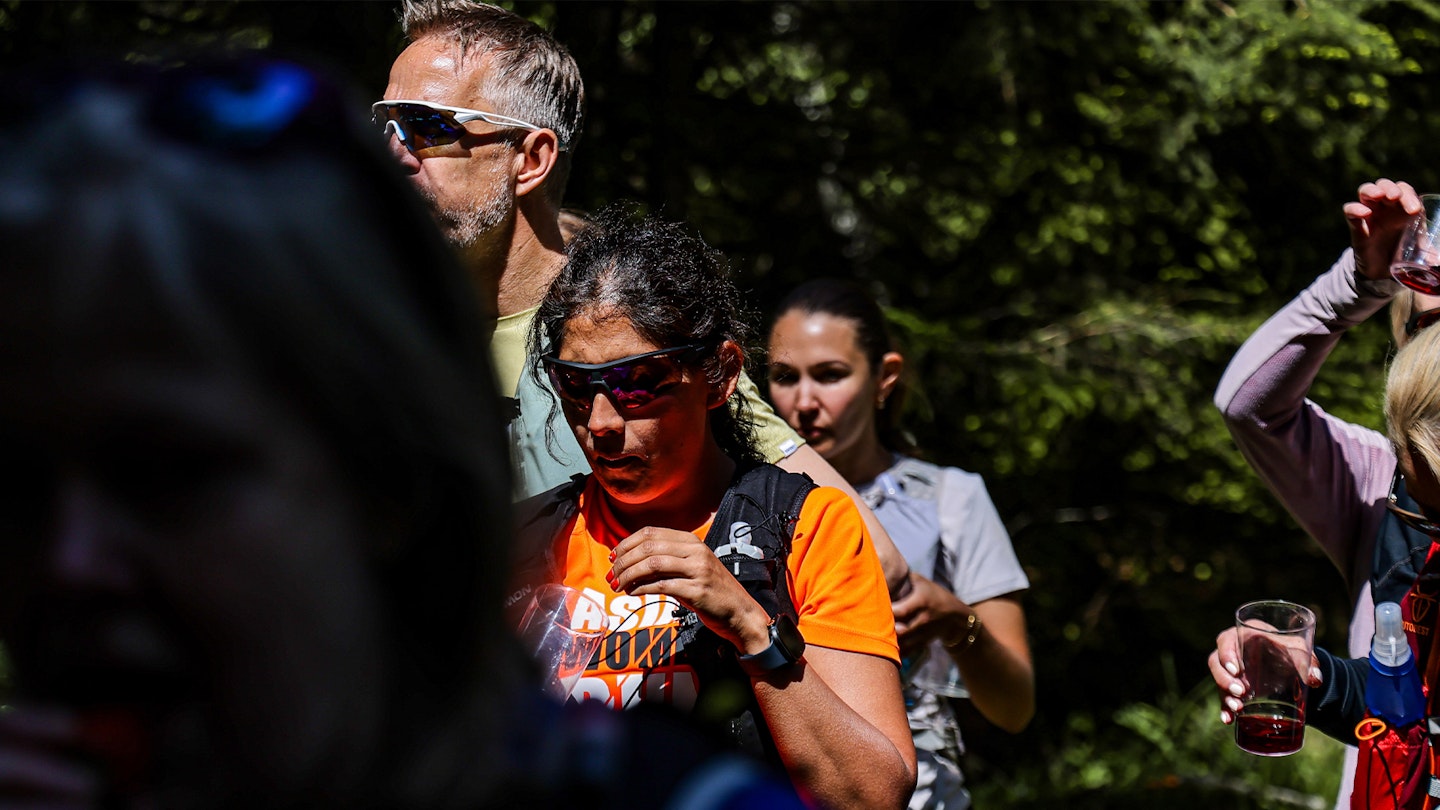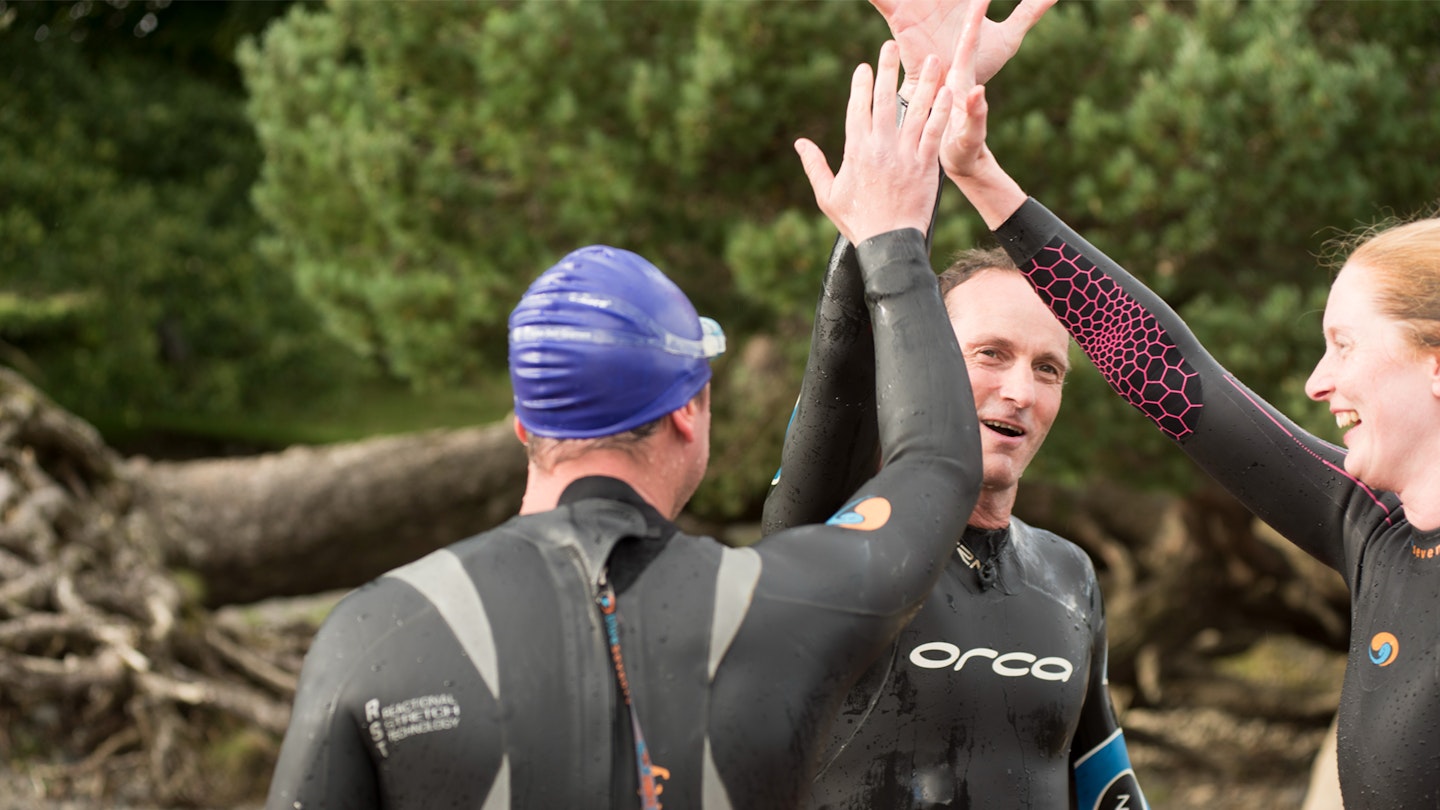Running is often hailed as a calorie-torching exercise – but how many calories does running burn, exactly? The short answer is: it depends. Factors like your weight, pace, and even running terrain all influence the total burn.
But of course, that's an annoying answer, so we've broken down of the numbers and science behind running’s calorie burn and distilled them into this utterly riveting article.
We've also gone ahead and pitted our favourite activities against each other – namely, running vs walking (and even vs cycling and swimming) to see which activities burn more! You're welcome, triathletes. Not that you lot will care. Or read this. Ahem–
Understanding how running burns calories

Let's start with the real basics. Running is a remarkably intense form of cardiovascular exercise that engages large muscle groups in your legs and core. This, naturaly, makes your body demand more energy.
As you run, your heart rate and breathing speed up to deliver oxygen to those working muscles. In other words, running revs up your metabolism during the activity.
According to an article from the American Council on Exercise (ACE), this combination of increased oxygen demand, full-body muscle engagement, and continuous movement makes running one of the most energy-intensive forms of exercise.
In fitness terms, running is typically classified as vigorous-intensity activity – meaning it burns calories at a much higher rate than gentler exercises. In fact, NHS guidelines count one minute of running as equivalent to two minutes of moderate exercise. TAKE THAT, Country Walking!
One way to gauge how hard you’re working (and by extension, how many calories you might be burning per minute) is your perceived effort. Tools like Rate of Perceived Exertion help you rate your effort without any gadgets.
If you’re gasping and can only sustain a pace briefly, you’re burning calories very fast; if you’re trotting comfortably while chatting, you’re burning them more slowly. We know this is a bit obvious, but clarity is king when you're aiming for the top spot on Google.
All this corresponds with heart rate zones as well – an easy jog might be Zone 1 (50–60 percent of your maximum heart rate), whereas an all-out sprint hits Zone 5 (90 percent and up).
How many calories does running burn on average?

You might have heard a rough rule: about 100 calories per mile of running for an “average” person. This rule of thumb isn’t far off. According to ACE, running a mile does burn roughly 100 calories for someone around 63 kilograms (140 pounds).
In practice, that would mean a 10-minute mile (~6 mph pace) might use about 130 to 150 calories for mid-weight individuals.
It’s also useful to look at calories burned per minute/hour, since most of us plan runs by duration. On average, running burns roughly 280 to 520 calories in just 30 minutes. That wide range accounts for differences in speed and body size.
Even at the low end, around 300 calories per half-hour is a lot – compare that to many other activities and you’ll see why running is famous for weight management. Though we should make this clear here: Running a mile doesn't burn that much more calories than walking a mile, you just do it in less time, so it's a more efficient and effective exercise.
To give another concrete example: a 72 kg (160 lb) runner burns around 15 calories per minute while running, whereas walking burns only about 8.7 per minute for the same person. In 30 minutes, that 160 lb individual might burn around 450 calories running, versus roughly 250 calories walking.
Running vs walking: Which burns more calories?

It’s no surprise that running burns more calories than walking for the same distance or time – but how much more? The answer requires some observation and calculation.
The National Institutes of Health published a study from the Department of Exercise Science in Syracuse University comparing the energy expenditure of running and walking. Using one mile as a control distance, the runners tested burned about 115 kilocalories, while walkers burned about 80 kilocalories walking that same distance.
That’s about a 40 percent increase. Now, consider that a runner also covers that mile faster than a walker. If you compare running and walking over the same time period (say, 30 minutes), the difference in calories burned is even bigger.
As mentioned earlier, a 160lbs person might burn 15.1 calories per minute running vs 8.7 calories per minute walking. Over a half hour, that could be around 450 kcal running versus 260 kcal walking. So per hour, running can burn nearly double the calories of walking in many cases.
That said, walking is still an excellent exercise, and walkers can compensate by simply going longer distances. Running burns more calories per minute than walking, but a walker can burn the same total by exercising for a longer duration.
What about mixing the two? Many beginners (and even seasoned marathoners) use a run-walk approach known as “Jeffing” – named after Olympian Jeff Galloway’s method of planned walk breaks. Jeffing allows you to recover between efforts, extend your running duration, and still clock up a good calorie burn. Check out our full explainer on what Jeffing is and how to do it.
Factors that affect how many calories you burn running:

Body weight
Your weight has a big impact on calorie burn. Moving a heavier body requires more energy – so a 90 kg person will burn more calories running a given distance than a 60 kg person. This also means if you lose weight, running the same route actually burns a bit fewer calories than it did when you were heavier.
Running speed and intensity
The harder you run, the more calories you burn per minute. Speed and intensity (including incline) make a huge difference. Running fast for 30 minutes burns more than running slowly for 30 minutes. Sprinting or uphill running will spike your heart rate and energy output, whereas a gentle jog on flat ground is less demanding.
High-intensity intervals (like sprint repeats or uphill drills) can burn a ton of calories in a short time – and may increase post-exercise calorie burn due to the “afterburn effect”.
Duration and distance
This one’s simple – the longer you run, the more total calories you’ll burn. Many runners use distance as a proxy for calories: e.g. if you burn roughly 100 kcal per mile, then 5 miles equals 500 kcal, 10 miles equals 1000 kcal, and so on.
Fitness level and running economy
Interestingly, the fitter you become at running, the more efficient your body gets – meaning you use slightly less energy at a given pace than you did as a beginner. This is known as running economy.
While that’s good for performance, it also means your usual run might not burn quite as many calories as it once did. Our guide to economising your running offers tips on improving your form and efficiency.
Terrain and conditions
Ding ding ding! Time to toot our horn! Guess what – trail running requires more energy than running on flat ground. Likewise, running into a headwind or in hot weather can make your body work harder to maintain the same pace.
Running vs cycling vs swimming: Which burns more calories?

Running vs cycling
Both are great cardio workouts, but running usually burns more calories per hour than recreational cycling. The main reason is that running is weight-bearing – you’re supporting your full body weight with each step.
A 70 kg person cycling at a leisurely pace (<10 mph) might burn around 290 calories in an hour, whereas running at 5 mph could burn close to 590 calories. At higher intensities, cycling can catch up or even exceed running in terms of calorie burn – especially in spin classes or uphill rides.
Running vs swimming
Swimming engages the whole body and can burn a similar number of calories to running, depending on the stroke and pace. According to data from Harvard Medical School, a 155-pound person doing 30 minutes of easy swimming burns about 223 calories, while 30 minutes of running at 5 mph burns about 298 calories.
If that swimmer picks up the pace, they might burn up to 372 calories in 30 minutes – approaching or matching a faster run.
The takeaways (not that sort, sadly)

Running is one of the most efficient ways to burn calories. It’s accessible, scalable, and can be adjusted for intensity and duration. Whether you’re looking to lose weight, improve fitness, or just get outside more, it’s hard to beat running for calorie burn.
That said, exact numbers vary. Your weight, fitness level, pace, terrain, and other factors all influence how many calories you burn. Fitness trackers and heart rate monitors can help you get a more accurate picture, and tools like RPE and heart rate zones (see our heart rate training guide) are great ways to train smarter.
Mixing running with walking, cycling, swimming, or hiking is also a brilliant way to stay motivated while reaping different benefits. And most importantly, keep showing up. Whether you’re burning 200 or 800 calories, your body will thank you.
About the author

Milo Wilson is our resident runner who is obsessed with exercising efficiently so that he can do it as little as possible. Despite his best wishes, his full time role as tester and reviewer of trail running shoes has him out on more trail runs than you've had hot dinners.
